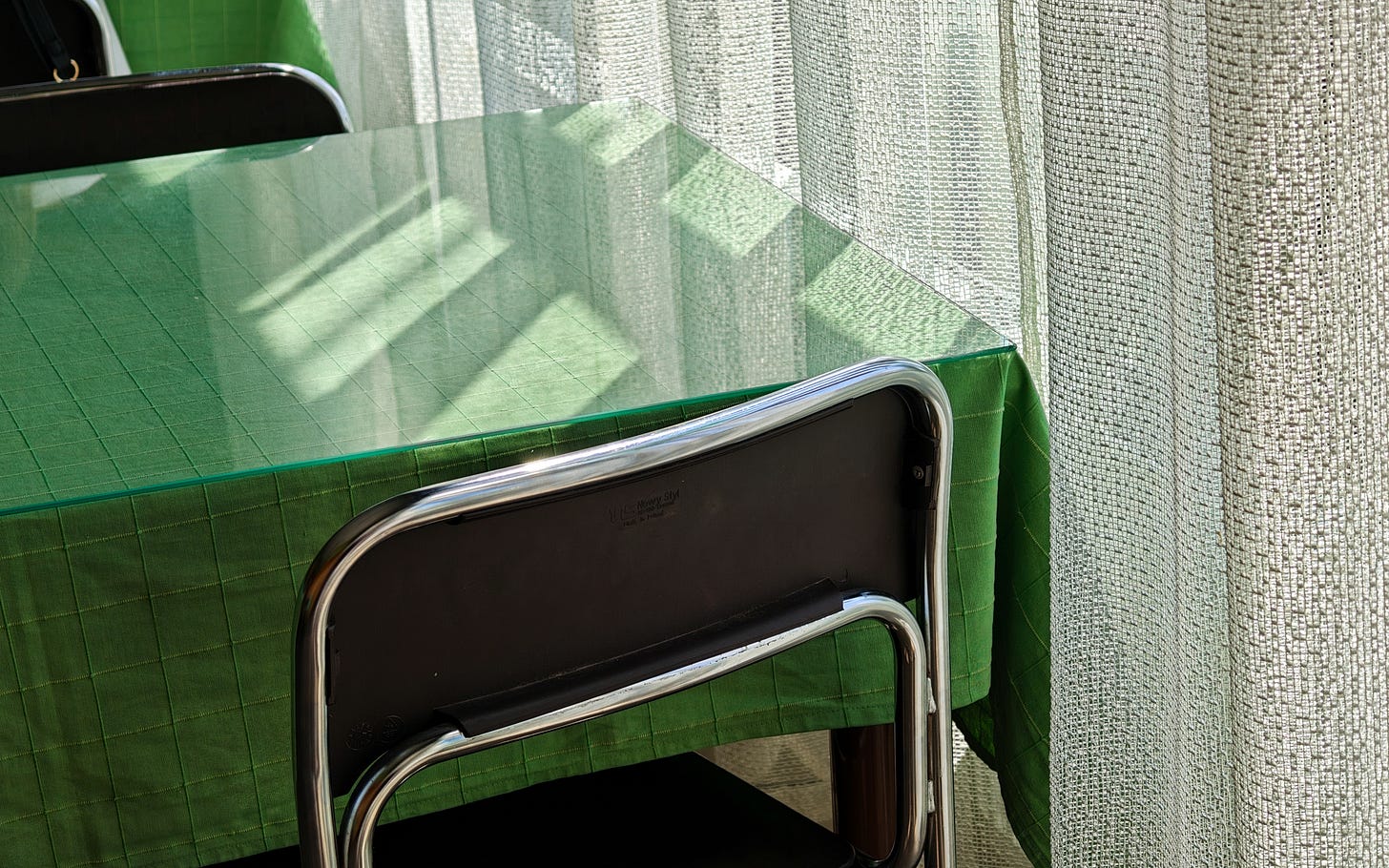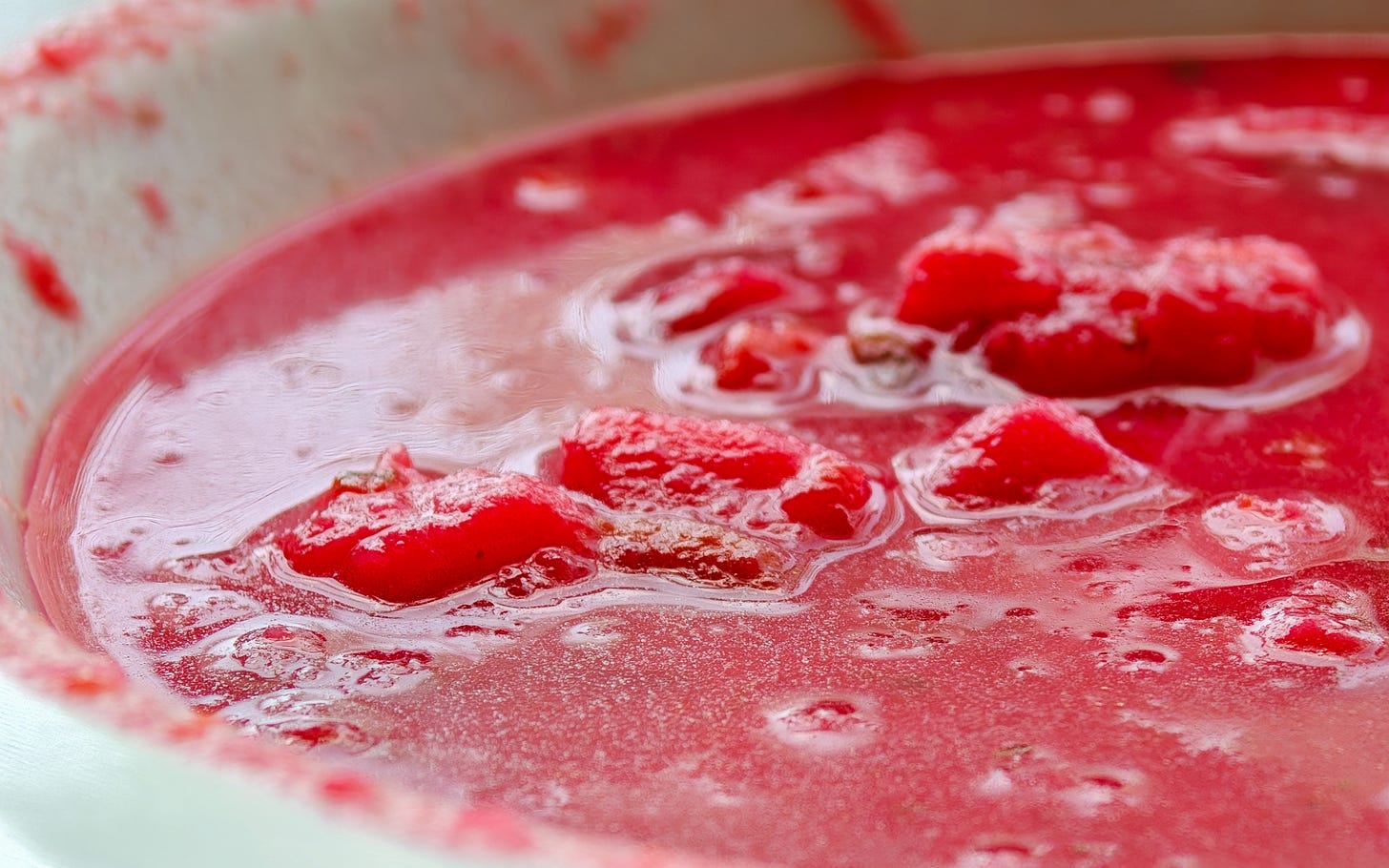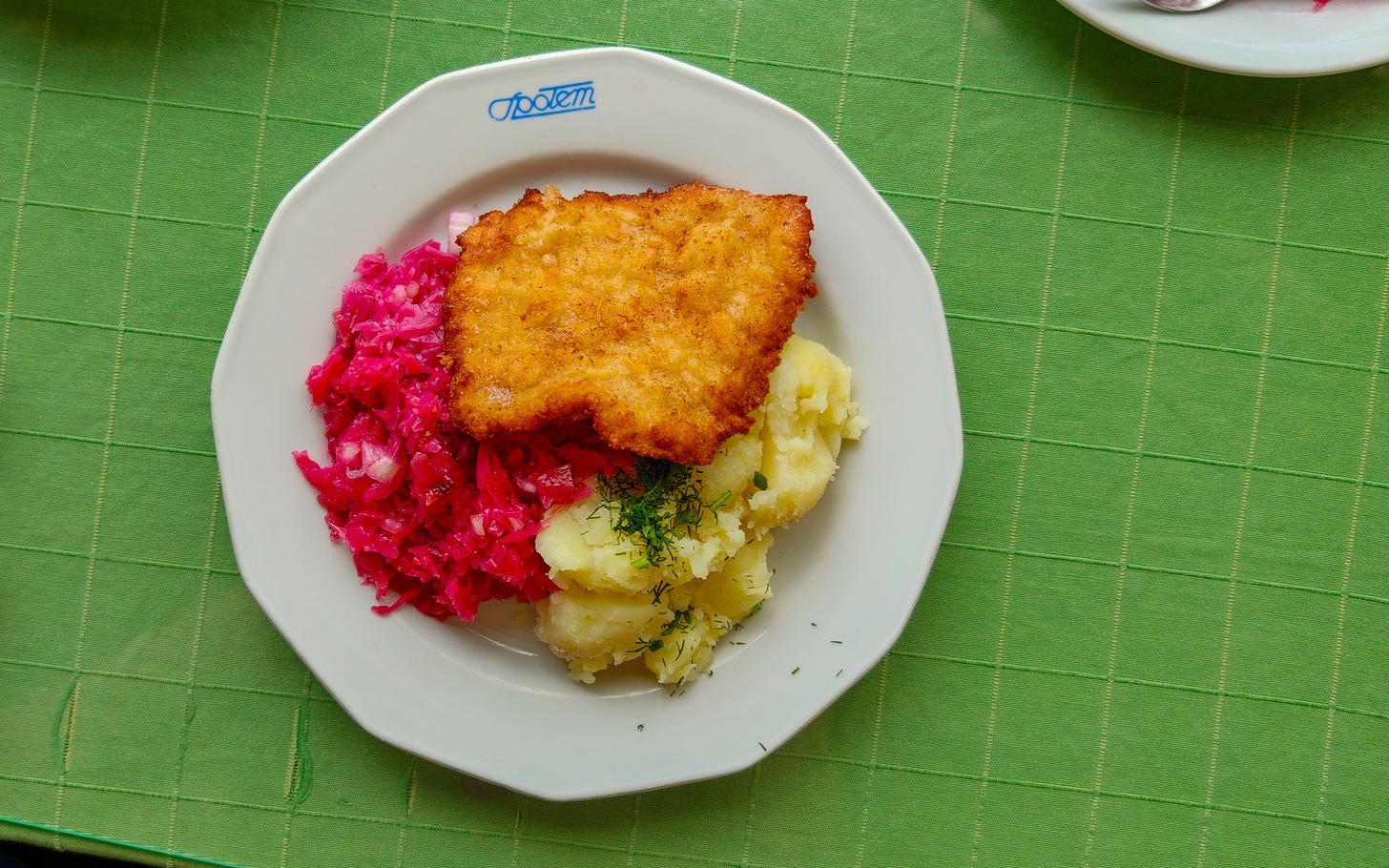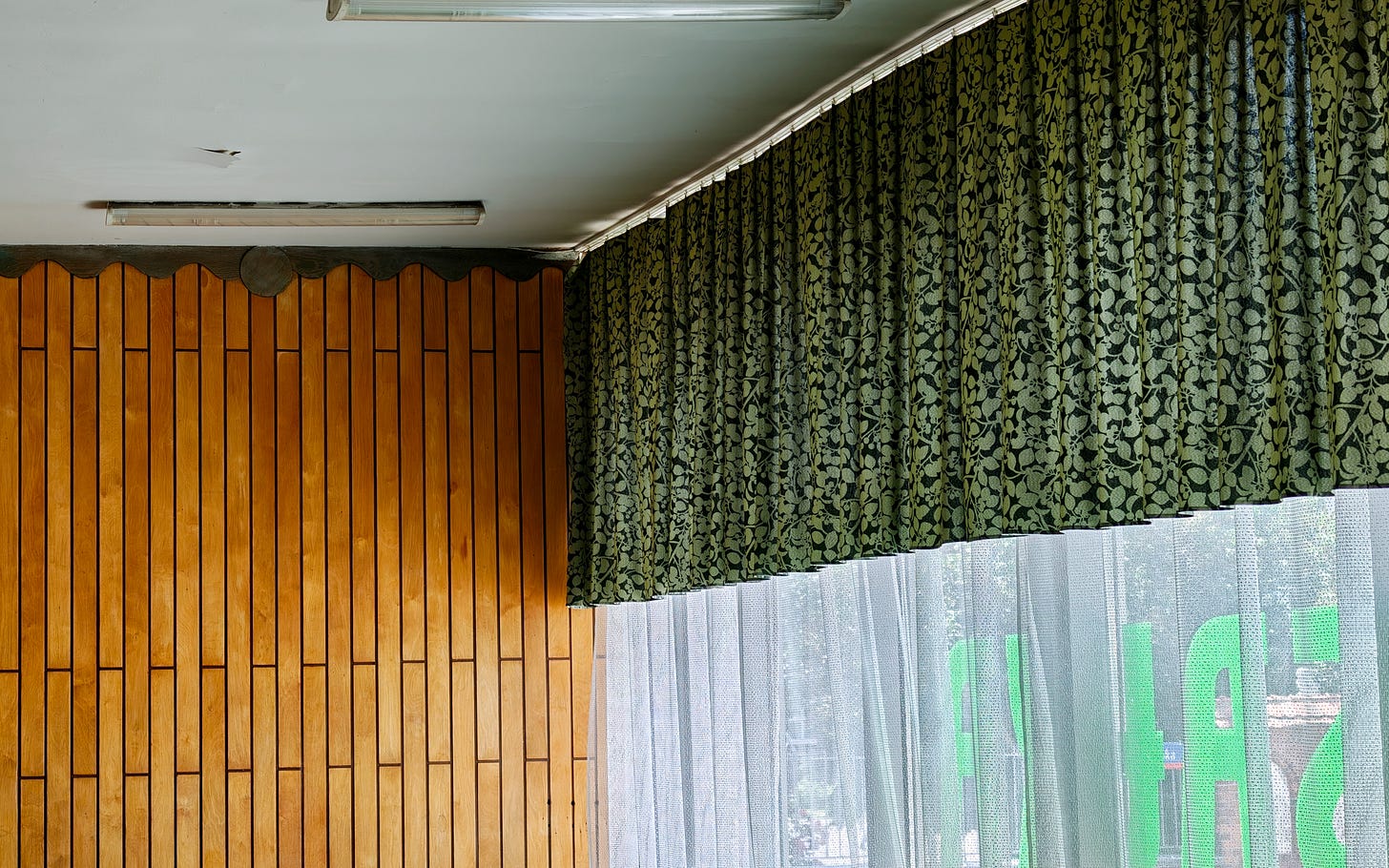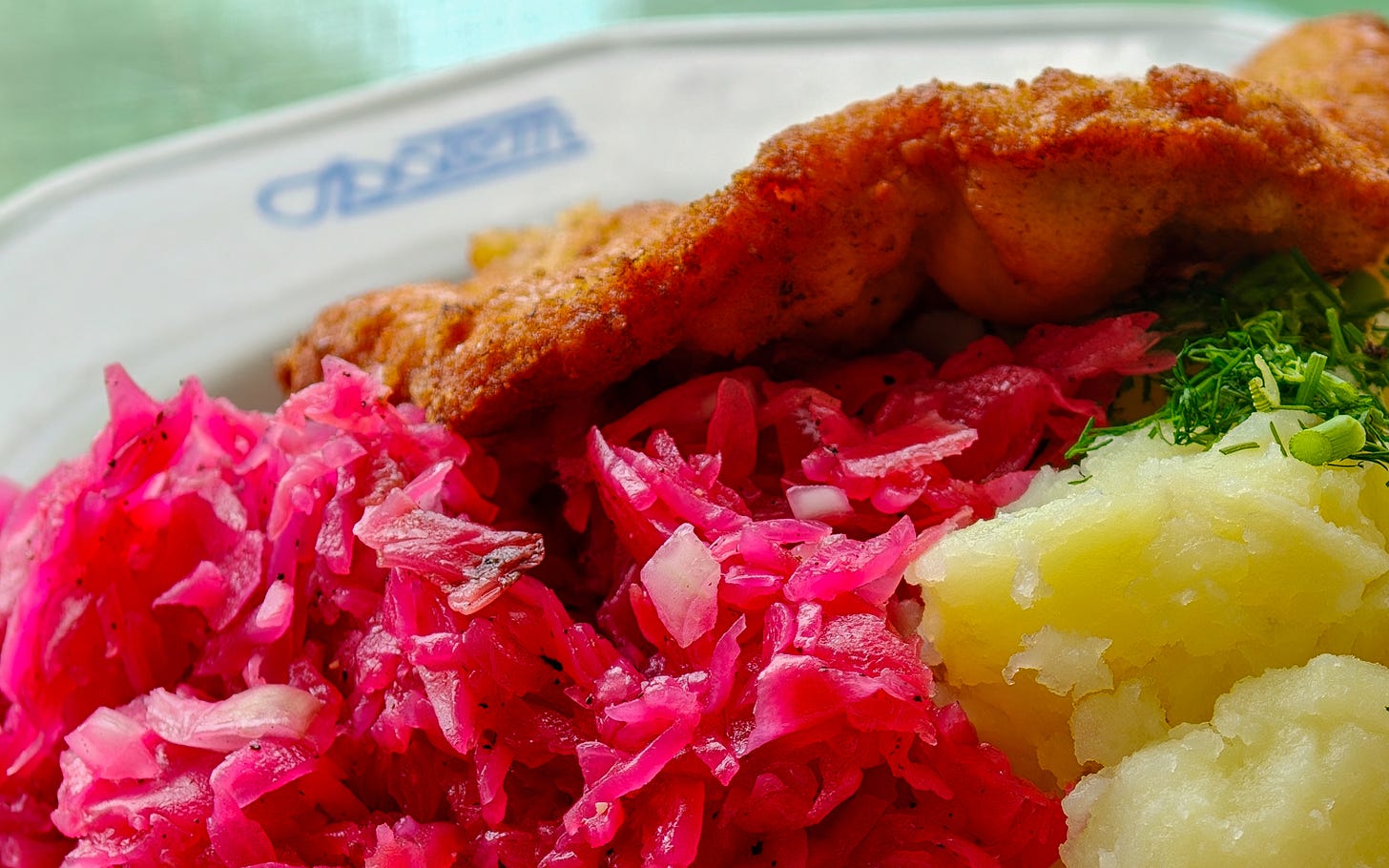In a recent touch of good fortune, just days after booking a weekend away in Warsaw, what should arrive in my house but a food-themed issue of Tribune promising a deep dive on the city’s oddly named milk bars, a relic of the Soviet era once widespread across the bloc, but now rarely found outside the country.
Somewhere between a canteen and a restaurant, these state-subsidised eateries offer concise, affordable menus of deeply traditional Polish food, prioritising simple and filling fare. Open mainly for lunch, and even today often still run by worker-owned cooperatives, they’re the sort of place you can get a bowl of soup and a palm-sized piece of protein for a fiver, with heaping mounds of various vegetables to go alongside.
The name — bar mleczny in Polish — can be traced rather prosaically back to the fact that early iterations were focused on dairy, though these days the menu is more expansive. While milk bars have dropped out of favour elsewhere, Poland is one of the few countries to still subsidise them. There was a national outcry in 2011 when Donald Tusk’s government proposed stopping the subsidy, reflecting the central position they still hold in Polish consciousness.
Bar Mleczny Rusałka, found on the edge of Warsaw’s slowly gentrifying Praga district, is meant to be one of the most traditional milk bars left. While its curved glass exterior, printed with a bright green logo, suggests a touch of modernity, there’s little to be found once you cross the threshold. Checkered green tablecloths line the compact square tables, squeezed tightly together, dim light filtering through net curtains onto wooden slatted walls. A functional menu hangs on the back wall, all Polish — no modern conveniences like an English translation here. The brusque, elderly cashier doesn’t take card, lagging behind a city that’s overwhelmingly cashless elsewhere, and even the crockery looks like it could predate Polish independence — though the mix of metal and plastic cutlery is just a little more modern.
The drinks options are the most obvious way the culinary offering here differs from the countless “traditional” restaurants catering to Warsaw’s tourist crowd. There’s no alcohol available, no tea or coffee, scarcely a glass of water. Despite the name you can’t even get a glass of milk, though kefir is available.. We opt for kompot, which I know going in is something fruity, but as near as I can tell turns out to be essentially a variant on Ribena, though less sickly sweet. I’m told that elsewhere this can be made from fresh crushed fruit, though there’s no sign of anything quite so organic here.
There’s not a huge amount of variation between Poland’s milk bar menus, which mostly play the hits: soup, pierogi, and pork are all likely to feature prominently wherever you go. A borscht, billed as Ukrainian, arrives lurid pink and packed with chunks of soft, steaming beet. It’s richer than any borscht I’ve had before, hearty and comforting, a bowl that could easily be a meal in its own right. I’m sure all the soups here, from the tripe-based local favourite flaki to a simple tomato option, sit in the same space: soups of substance, intended to fill the belly and warm the heart for hours at a time.
A pork schnitzel arrives sensibly sized, clearly a meal’s worth but a far cry from the plate-sized slabs of meat you’ll often find elsewhere. There’s no such modesty to the vegetable sides, heaped high around it. Rosy red cabbage provides a sharp contrast to the heavy fried pork, buttery mash instead doubles down on the sense of a meal with some heft to it. I struggle to finish my plate, after sharing a bowl of borscht beforehand, and still spend less than I would have on a single sandwich elsewhere.
On a sunny Saturday lunchtime, Rusałka is mostly populated by elderly couples and families with young kids, perhaps those best served by the promise of heaving plates of healthy(ish) food for about the same price as a McDonald’s meal deal. We’re clearly the only tourists there, the only ones stammering to pronounce Polish dishes we’ve picked using Google Translate, muddling our way through the dance of ordering at one kiosk and collecting our food from another, though there’s nothing but patience for our inefficiencies.
I’d hoped to visit more than one milk bar in my Warsaw weekend, but it wasn’t to be. The closest we managed was a visit to Milk Bar Elektrownia, which shares a name alone with Rusałka. Here, lunch is eschewed for brunch, kompot for coffee, pierogi for poached eggs and elaborately layered cakes. I want to hate it, but am begrudgingly impressed by the food, even if it keeps its Polish influences entirely to the fringes. But it represents an odd way of reckoning with the milk bar’s place in Polish culture, understanding that they’re important but seemingly not why. Nothing here is especially affordable, and the pretty plating and minimalist milk bottle logo seem designed to fill your feed first and stomach second.
It seems to me important that Rusałka and its like are remembered for more than just a kitschy name. Back in 2016 The Guardian reported that fewer than 150 remained across the entirety of Poland, down from a heyday of 40,000 or more — and numbers have likely only lowered since. With curt service and quick turnarounds, these may not be places for people to linger, but they’re community hubs nonetheless, allowing anyone and everyone to afford a warm meal outside the house, while ensuring that the country’s staple dishes have a life outside the tourist traps of Warsaw’s Old Town.
The UK had its own milk bars once — World War II-era canteens officially known as British Restaurants — as did countless other countries, well outside the reach of the Soviet Union. Outside Poland they’re mostly gone, and probably for good — with the best will in the world, we’re long past the age of the state subsidising much that it doesn’t have to. But while the decades-old decor may make milk bars appear a part of Poland’s past, they’re just as much its present, and I dearly hope its future too.






